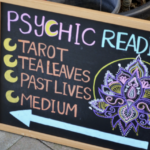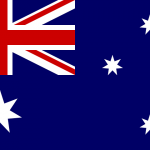Can Witchcraft or Fortune Telling Amount to a Crime in NSW?

‘Double, double toil and trouble!’ – the mischievous dealings of cackling witches, flying around on broomsticks and cursing your crops have been a source of moral panic for centuries.
It’s not surprising then, that criminal offences against witchcraft have been implemented both in Europe and in Australia, with some still on the books!
Here’s what you need to know.
What is witchcraft?
Most cultures have had some belief in the practice of magic, whether the benevolent kind which heal and help, or the malevolent which curse and harm.
In medieval and early modern Europe there was a belief that certain individuals, usually women, communed with the Devil or other evil entities to bring about harm. These evil-doers were called ‘witches’ and their supernatural ability to shape the world in their image, called ‘witchcraft’.
From the 15th to the 18th century many a purported witch was put on trial across the globe. In England, the punishment for witchcraft was either imprisonment, fines or exile. However, in the New England region of the emerging Americas, capital punishment was frequently imposed, perhaps most famously during the Salem witch trials.
Thankfully, beginning in the mid 1700s belief in witches began to wane as the Age of Enlightenment took hold. Soon, the notion of evil hags casting spells over their cauldrons became a ludicrous belief from the backwards dark ages.
However, in the early 20th century, the image of witchcraft took an interesting turn. Beginning shortly under World War I, many people began to take an interest in pre-Christian religious beliefs. One idea from this ‘neopagan’ movement was that there really were witches in medieval Europe, but they were practicing a pagan religion that survived despite Christianisation.
In the 1930s, British amateur anthropologist Gerald Gardner founded a new religious movement call ‘Wicca’ designed to capture the lost art of witchcraft. For modern witches or ‘Wiccans’, witchcraft is not about doing evil for the Devil but forms part of a nature-centred religion focused on reviving lost rituals and beliefs from the past. According to the latest census, around 6000 Australians identify as Wiccans.
The Witchcraft Act 1735
The Witchcraft Act became law in Great Britain in 1735, reflecting a shift in criminal law regarding witchcraft in the country.
Unlike previous laws against witchcraft, the Act made clear that real witches were not real, emphasising that focus of the criminal law was on individuals who engaged in the crime of fraud by pretending to be witches. Witches were punished, not because they did the Devil’s work, but because they took advantage of desperate people clinging to the hope of contacting loved-ones who had passed away, having those with whom they were in love reciprocate the feelings, casting vengeance on those perceived to have wronged them or forging a better future.
The maximum penalty for this offence was life imprisonment.
The last person convicted of a witchcraft offence in the UK was the Scottish medium Helen Duncan in 1944. Duncan was a flagrant fraudster who would stage seances using dolls as stand-ins for ghosts and vomit up cheese cloth whilst pretending it was ‘ectoplasm’. Duncan was ultimately charged for making claims she was in touch with victims of the HMS Barham which sank leaving 861 men dead. Her attempt to profit off a tragedy ultimately had her charged under Witchcraft Act 1735 and imprisoned for nine months.
Australian colonies inherited British laws against witchcraft during our founding, although they weren’t as commonly enforced as they were in the UK. In 1951, the Witchcraft Act 1735 was formally repealed in the UK and in 1969 the equivalent law was repealed in New South Wales.
Australian offences against fortune telling
Whilst all jurisdictions in Australia repealed discrete laws against witchcraft in the early 20th century, some States have retained laws against fortune telling up until today.
Offences against fortune telling focus on individuals who ‘pretend’ to tell fortunes in order to deceive others. Fortune telling was by far the most commonly enforced offence related to witchcraft in Australia, with one estimate finding that, from the years 1900 to 1918, there were at least 247 prosecutions for the act.
Although NSW repealed laws against fortune telling in its Vagrancy Act in 1979, these laws remain on the books in South Australia.
Section 40 of the South Australian Summary Offences Act 1953 states that:
A person who, with intent to defraud, purports to act as a spiritualist or medium, or to exercise powers of telepathy or clairvoyance or other similar powers, is guilty of an offence.
This offence carries a maximum penalty of $10,000 or two years imprisonment.
Witchcraft and fortune telling can amount to fraud
And while there are no discrete offences against witchcraft or fortune telling in NSW, such conduct can amount to the offence of fraud, which is an offence under section 192E of the Crimes Act 1900.
The offence of fraud carries a maximum penalty of 10 years in prison if the case is finalised in the District Court, or two years if it remains in the Local Court.
To establish the offence, the prosecution is required to prove beyond reasonable doubt that:
- A person acted dishonestly,
- The person did so by a deception,
- The conduct was intentional or reckless, and
- The actions created a financial advantage over another person’s property, or caused them to suffer a financial disadvantage, and
What is dishonesty?
Section 4B of the Crimes Act makes clear that whether the conduct amounts to ‘dishonesty is to be determined by the trier of fact – whether the magistrate in the Local Court or the jury or judge sitting alone in a higher court – according to the standards of ordinary people and known by the defendant to be dishonest according to the standards of ordinary people.
What is a deception?
Section 192B of the Crimes Act defines ‘deception’ as any intentional or reckless deception, by words or other conduct, as to fact or as to law, including:
(a) a deception as to the intentions of the person using the deception or any other person, or
(b) conduct by a person that causes a computer, a machine or any electronic device to make a response that the person is not authorised to cause it to make.
What is the meaning of reckless?
A person acts recklessly if he or she foresaw (pardon the witchcraft pun) that the conduct in question could amount to obtaining benefit or causing a loss dishonestly and by a deception but went ahead regardless.
What are the defences?
Over and above having to prove each essential element (or ingredient) of a fraud offence, the prosecution must also disprove beyond a reasonable doubt any legal defence raised by the evidence.
A defendant is entitled to a finding of not guilty if the prosecution is unable to do this.
Legal defences to fraud charges include duress, necessity, mental illness and self defence.
Going to court for a criminal matter?
If you are going to court over a criminal case, call Sydney Criminal Lawyers anytime on 9261 8881 to arrange a free first conference during which one of our experienced defence lawyers will assess the case, advise you of your options and the best way forward, and fight for the optimal outcome.






